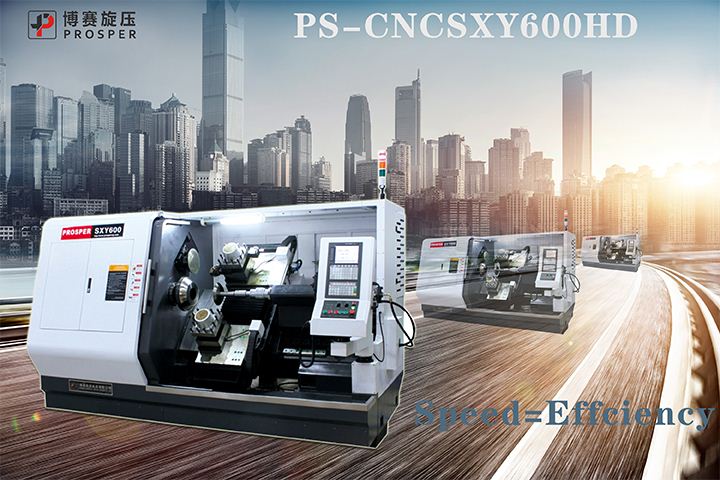Spindle Speed or Spinning Linear Speed of Metal Spinning Machines
Date: May,22 2020 View:
Spindle Speed or Spinning Linear Speed of Metal Spinning Machines
The spindle speed is a parameter directly related to the spinning machine and productivity, but its size has little effect on the spinning deformation and can be selected within a relatively large range. The increase of spindle speed improves the surface roughness of spinning parts and increase productivity. However, the increase in spindle speed is often limited by the power, rigidity and cooling conditions of the spinning machine. When the spinning part is spinning at high speed, the machine with insufficient rigidity will produce violent vibration. With the strong friction between the roller and the workpiece due to high-speed rotation, if there are not sufficient cooling conditions, the heat generated cannot be dissipated in time, which will inevitably cause the surface quality of the spinning parts to decrease significantly. Therefore, when selecting the spindle speed, factors such as machine conditions, production safety, and material types of spinning parts must be considered.
The circumferential linear velocity (
υθ) in the deformation zone of the spinning part is,
υθ=πDnm
In the formula, D ---- The diameter of the deformation area of the spinning part;
n
m---- Spindle or workpiece speed。
It can be seen from this formula that the spinning linear velocity (
υθ) is a function of the diameter (D) of the deformation zone when the spindle speed n
m is constant. Therefore, when spinning the cylindrical member,
υθ is a certain value. When spinning special-shaped parts,
υθ is a variable value, which changes with the D value.
For most materials, 150-600m / min is suitable for spinning linear velocity. For aluminum, brass, zinc and other materials, the maximum spinning linear speed is about 1500m / min; for copper and silver materials, the maximum spinning linear speed is 80% of this value; for steel materials, the maximum is 35% ~ 50% of this value; for magnesium and its alloys, nickel and its alloys and other materials, the maximum is 60% of this value; for stainless steel materials, the spinning linear velocity is often 120 to 300m / min. In addition, in the selection of spinning linear velocity, the size of the spinning piece and the hardness of the material must also be considered. For small and soft materials, the larger value can be taken; for large or hard materials, the smaller value should be taken.
In order to increase the productivity of the machine to a greater extent, spindle speed of Prosper small and medium-sized spinning machines are 3000-5000 rpm, and the test of 8000-10000rpm is carried out. Obviously, the high rotational speed of spinning is beneficial to the productivity of the machine, but it is limited by the conditions of machine vibration, production safety and ultrasonic environmental protection during production.
Tests have shown that when the tapered part and the curved linear part are spinning, if the diameter difference between the large and small ends of the workpiece is large, with using constant speed, the circumferential linear velocity at the large and small ends differs greatly. When the spindle speed is high, the linear speed of the big end is too large, which is easy to produce vibration. When the speed is low, the processing efficiency is reduced. At the same time, the constant speed will make the traces of the spinning thread on both ends of the workpiece vary greatly, that is, uneven. Therefore, it is best to use variable speed, constant circumferential linear speed control.






